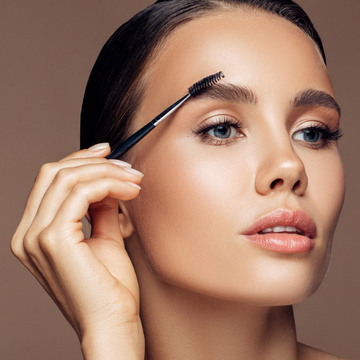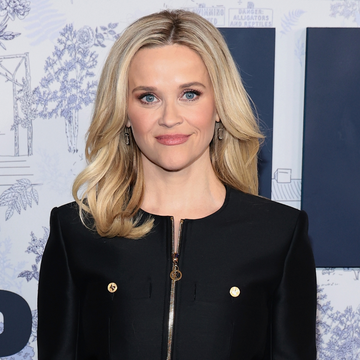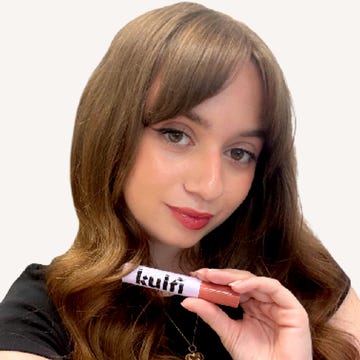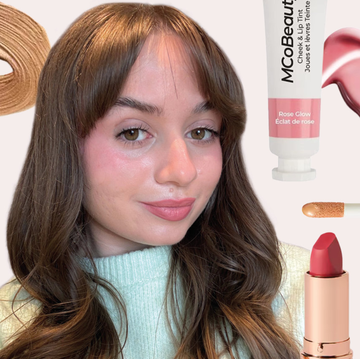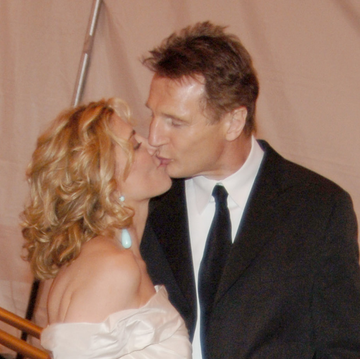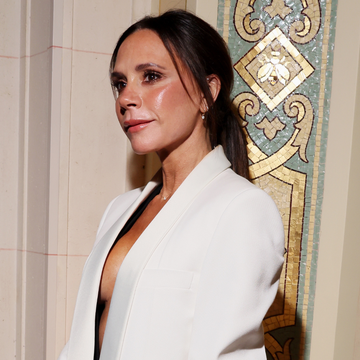Bronzer is a beauty non-negotiable, especially in summer. It’s one of those products that instantly pulls your makeup together – there’s no quicker way to faux a healthy, sun-kissed glow – and with clever MUA-approved techniques, it can even create a ‘facelift’ effect. Yet, despite its status as a makeup staple, bronzer can be surprisingly easy to get wrong.
All it takes is the wrong shade or a flawed technique for your ‘back from holiday glow’ to veer into harsh, patchy territory, completely throwing off your base. If you’ve ever fallen victim to muddy bronzer, you’re in the right place. We’ve spoken to the experts for their top tips on getting it right, from shade matching to flawless blending.
What bronzer formula is best for me – cream, powder, or liquid?
First things first, you need to choose the right bronzer for your skin. As with any beauty product, there’s not a one-size-fits-all answer. Melanie Barrese, professional makeup artist and global education director at By Terry, says: ‘The best formula depends on two things: your skin type and how you want the bronzer to look.’
What to read next
‘If you have dry skin, then having a liquid or cream consistency is likely to sit on the skin better. These formulas will melt into skin and give a fresh, slightly dewy look.’
‘On the other hand, if you have oily skin, the powder formula will have more longevity. With powders, you can get both shimmery and matte finishes; this will come down to personal preference. But for mature skin, I would recommend staying away from shimmery textures and stick with real skin finishes to give the skin a soft dewiness and radiance without looking heavy on the skin or emphasising texture. ‘
For a foolproof natural glow, GH is a huge fan of By Terry’s Tea to Tan Sun Powders which are a really clever hybrid formula. As Melanie explains: ‘They’re unique as they’re a powder formula, but because they contain shea butter and skin-mimicking pigments, they melt into skin like a cream for a truly natural effect.’
How do I choose a bronzer shade that’s right for me?
Once you’ve settled on a formula, the next step is shade selection. While it might be tempting to reach for a deeper colour, Warren Dowdall, senior pro artist at Bobbi Brown, urges caution: ‘this can make the skin look muddy rather than sun-kissed. ‘
To get it right, he advises: ‘Choose a bronzer that mimics the way your skin naturally tans.
Stay within one to two shades deeper than your natural tone, and match your undertone-cool with cool, warm with warm-for the most flattering result.’
Not sure about undertones? Breaking it down, Warren explains: ‘Fair skin tones tend to suit soft golden or slightly peachy shades. Medium to olive tones should look for richer golden or soft amber hues, while deeper skin tones look great in terracotta tones or deep chocolate browns.’
Where should bronzer be applied?
Once you’ve found your perfect match, placement is key. Get it wrong and bronzer can look unbalanced, or even drag your features down. The fix? Melanie says: ‘I like to apply bronzer in the areas of the face where we naturally catch the sun. Think about if you were to spend a day in the sun: you would likely get some colour along the top of the nose, along the cheekbones, and on the forehead around the hairline.’
And, if you want to take it a step further: ‘I also like to sweep some bronzer across the eyelids, regardless if I have eye makeup on or not,’ says Melanie. ‘This creates a soft warmth that ties the whole look together. Bronzer is overall an incredibly useful product to have in your makeup bag; you can even use it on the body to create a consistent sun-kissed colour; I often use it on ears, the neck and decolletage, as well as arms and legs if necessary.’
What is the best technique for applying bronzer?
Even the best product will fall flat without the right technique. For pro-level results, Warren advises: ‘Use a soft, fluffy brush to sweep bronzer in a ‘C' shape from forehead to temples to the top of the cheekbones, blending into the hairline.’
For a seamless look, he says: ‘Lightly dust any remaining product along the jawline and neck for balance. The secret is blending – keep edges soft and build the colour gradually. Bronzer should warm the face and add dimension; it should never look obvious or streaky.’
And, if you’ve accidentally gone in with a heavy hand (it’s easily done!), Melanie offers a quick fix: ‘If I’ve applied too much, I like to use a foundation brush with remaining product on it, and lightly buff in the areas I want to diffuse and soften.’
How to faux a ‘facelift’ on mature skin with bronzer
Bronzer is brilliant for adding warmth, but it can also offer a subtle lift. It’s a trick Helen Mirren’s makeup artist, Val Garland, swears by, even referring to it as a ‘facelift’.
In a how-to tutorial that’s picked up 270k Instagram views, she explains: ‘I apply bronzer on mature skin in a C shape.’ She starts on the temple, then swoops the brush along her cheekbones and finishes on the apple of the cheek, before going back and forth in the same curved motion. ‘It’s almost more like a blush placement, and that way, I’m getting the lift to my face.’
Melanie agrees that bronzer has excellent anti-ageing uses. ‘With any application of makeup on mature skin, we always have lifting at the back of our minds. To create a lifting effect with bronzer, you can blend high on the top of the cheekbones and sweep it across the eyelids in a way that creates lift towards the hairline’.
Any common mistakes to avoid with bronzer?
The biggest bronzer faux-pas? According to Melanie: ‘The most common mistake I see with bronzer is people using it to contour.’
She explains: ‘While bronzer is a deeper shade and can be used to shape the face, by its nature, it has a warmer undertone. Meanwhile, contour products tend to have a slightly cool, grey tone that mimics shadow and helps to sculpt the face. Bronzer should be applied where you naturally tan (on the face’s high points) as opposed to under the cheekbones, under the jawline or at the sides of the nose.’
Now that you’re equipped with expert advice, get ready for the ‘have you been on holiday?’ compliments to come rolling in.











